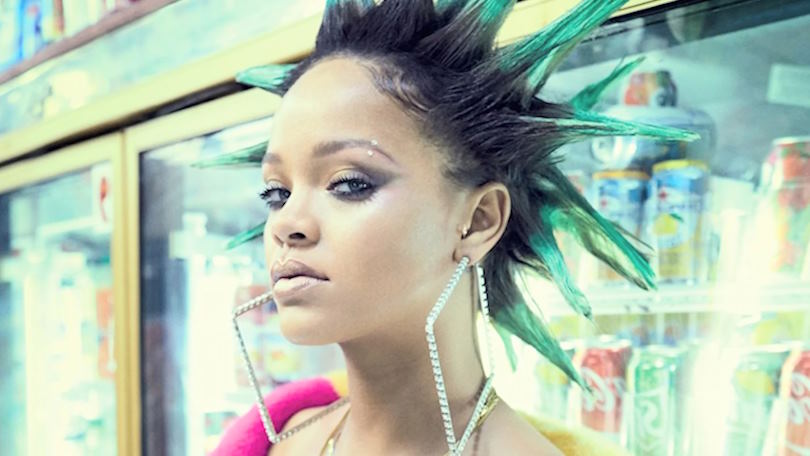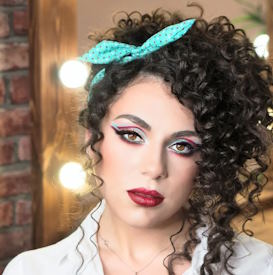Music subcultures have long been renowned for their distinctive fashion, attitude, and artistic expression. Beyond the melodies and lyrics, these subcultures have utilized various visual elements to communicate their beliefs, affiliations, and ideologies. Among these, hairstyles have emerged as a potent medium for self-expression, reflecting the rebellious spirit and identity of subcultural movements. From the electrifying punk mohawks to the intricate braids of hip-hop, and the enigmatic goth styles to the timeless rockabilly pompadours, each subculture’s unique hairstyle serves as a vivid testament to the subversive, cultural, and individual forces at play.

Punk Subculture and Hairstyles: A Rebellious Expression
The punk movement, born in the 1970s, emerged as a bold rejection of societal norms and conventions. Rooted in a fervent desire for authenticity and a disdain for the mainstream, punk culture transcended music, seeping into fashion, art, and even hairstyles. Characterized by its raw energy and unapologetic attitude, punk subculture brought about a radical shift in the way individuals expressed themselves.
Iconic punk hairstyles became synonymous with this subculture’s spirit. Mohawks, liberty spikes, and vividly colored hair served as visual statements of rebellion against the establishment. These unconventional hairstyles were not just about appearance; they were symbolic manifestations of the punk ethos – a fierce refusal to conform and a vehement demand for individuality.
Punk hairstyles challenged societal norms by embracing the unconventional. They represented a visual uproar against the status quo, mirroring the subculture’s anti-authoritarian and anti-capitalist beliefs. Figures like Sid Vicious, with his disheveled, spiked hair, and the vibrant-hued locks of Poly Styrene from X-Ray Spex, exemplified the fusion of music and style that defined punk.
Hip-Hop Subculture and Hairstyles: Embracing Identity and Individuality
Rooted in marginalized communities and urban streets, the hip-hop subculture has emerged as a powerful voice for self-expression, resistance, and cultural identity. Beyond its musical rhythms, the world of hip-hop has woven a tapestry of distinct hairstyles that reflect the subculture’s rich heritage and its bold assertion of individuality.
Distinctive hip-hop hairstyles such as cornrows, braids, afros, and fades serve as more than just fashion choices – they are statements of cultural pride. These hairstyles are deeply intertwined with the African diasporic heritage, reclaiming traditional aesthetics and challenging Eurocentric beauty norms. They are more than strands of hair; they are symbols of resilience and authenticity, defying societal expectations.
Hip-hop artists have harnessed their hairstyles as powerful tools to challenge conventional beauty ideals. By embracing their natural textures and experimenting with innovative styles, they push back against the pressures to conform. Figures like Erykah Badu and her iconic headwraps, or the late Tupac Shakur’s versatile hairdos, have not only paved the way for unique looks but have also influenced entire generations.
Rockabilly Subculture and Hairstyles: Reviving the Retro Glamour
 Emerging from the effervescent era of 1950s rock ‘n’ roll, the rockabilly subculture encapsulates a nostalgic revival of vintage charm and rebellious spirit. Beyond its vibrant music and fashion, rockabilly boasts a distinctive array of hairstyles that pay homage to the golden days while igniting contemporary trends with a retro flame.
Emerging from the effervescent era of 1950s rock ‘n’ roll, the rockabilly subculture encapsulates a nostalgic revival of vintage charm and rebellious spirit. Beyond its vibrant music and fashion, rockabilly boasts a distinctive array of hairstyles that pay homage to the golden days while igniting contemporary trends with a retro flame.
Classic rockabilly hairstyles like pompadours, victory rolls, and pin-up styles embody the essence of the subculture. These meticulously crafted looks seamlessly transport us back to the bygone era of slicked-back hair and meticulous curls. They are not just hairstyles; they are artistic expressions of a subculture that celebrates the past while adding a dash of personal flair.
Rockabilly hairstyles serve as visual gateways to a world of retro glamour and freedom. Their resonance with the subculture’s music, fashion, and lifestyle is unmistakable. These hairstyles mirror the spirited rhythms of rock ‘n’ roll, harmonizing with the vintage-inspired attire and fueling the subculture’s vibrant dance culture.
Interestingly, the allure of rockabilly hairstyles continues to transcend time. The revival of these classic looks has permeated modern hair and fashion trends, proving that some styles are timeless. From fashion runways to urban streets, echoes of pompadours and victory rolls can be found, testifying to the enduring influence of rockabilly on contemporary style.
